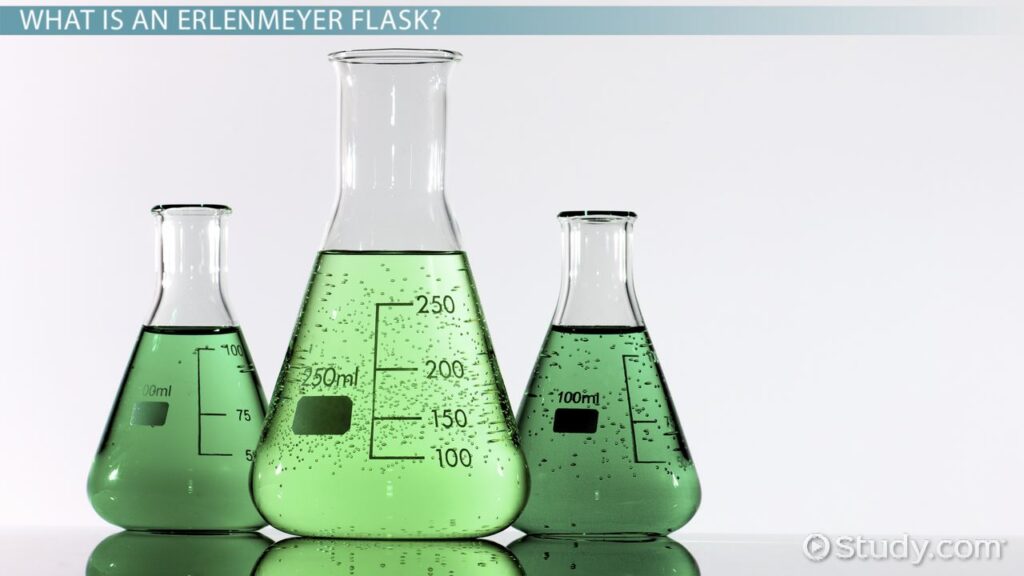In the vast realm of laboratory apparatus, one iconic vessel stands out for its distinctive shape and versatile applications—the Erlenmeyer flask, also known as a conical flask. Named after the German chemist Emil Erlenmeyer, who first introduced it in the late 19th century, this flask has become an indispensable tool in laboratories worldwide. Its unique conical design and wide-ranging uses make it a symbol of scientific experimentation and discovery.
History of the Erlenmeyer Flask
The story of the Erlenmeyer flask begins in the late 19th century when Emil Erlenmeyer, a renowned German chemist, sought to create a vessel that would address the limitations of traditional flat-bottomed flasks. Erlenmeyer aimed to design a container that would facilitate the mixing of liquids without the risk of spills and splashes. In 1861, he successfully patented the conical flask that would bear his name.
Design and Characteristics
The Erlenmeyer flask is characterized by its distinctive conical shape, featuring a narrow neck, a broad base, and sloping sides. The flask is typically made of borosilicate glass, a material known for its resistance to thermal shock and chemical corrosion. The conical shape serves several purposes, including efficient mixing of liquids through swirling and reduced risk of splashing during agitation.
The narrow neck of the Erlenmeyer flask allows for easy pouring and minimizes the risk of spills, making it a preferred vessel for various laboratory procedures. Additionally, the flat bottom provides stability when the flask is placed on a laboratory bench or other surfaces.
Applications in Laboratory Settings
The Erlenmeyer flask finds applications across a wide spectrum of scientific disciplines, including chemistry, biology, and biochemistry. Some of its primary uses include:
1. **Chemical Reactions:** The conical shape of the flask allows for efficient mixing of reagents during chemical reactions. The narrow neck facilitates the addition of substances, and the sloping sides minimize the risk of splashing.
2. **Titration:** Erlenmeyer flasks are commonly used in titration experiments, where precise volumes of a solution are added to react with another solution to determine the concentration of an analyte.
3. **Culturing Microorganisms:** In microbiology, Erlenmeyer flasks are employed for the cultivation of microorganisms. The shape of the flask provides a large surface area for aeration, crucial for the growth of bacteria and yeast cultures.
4. **Storage:** Erlenmeyer flasks are often used for storing solutions, particularly when aeration or mixing is required. The narrow neck allows for the use of stoppers or caps to seal the flask securely.
5. **Boiling and Heating:** The borosilicate glass construction of Erlenmeyer flasks makes them suitable for boiling liquids and heating experiments. The wide base ensures stability during heating processes.
6. **Filtration:** The conical shape facilitates the use of filtration setups, where a filter paper can be easily fitted to separate solid particles from a liquid.
Innovations and Variations
Over the years, variations of the Erlenmeyer flask have been developed to meet specific experimental needs. Some flasks come equipped with sidearms to facilitate the connection of additional apparatus, such as condensers or tubing. Graduated markings on the side of the flask allow for accurate measurement of volumes, adding to the versatility of this laboratory staple.
Conclusion
The Erlenmeyer flask, with its conical elegance and functional design, stands as a symbol of scientific inquiry and experimentation. From the chemistry bench to the microbiology laboratory, this versatile vessel continues to play a crucial role in a myriad of scientific applications. As technology and laboratory practices evolve, the Erlenmeyer flask remains a steadfast companion to researchers and scientists, embodying the spirit of discovery and the pursuit of knowledge.

